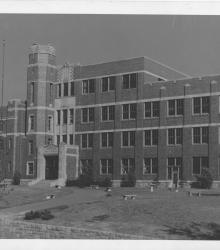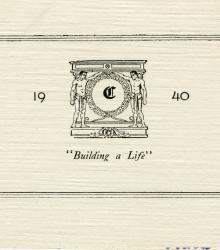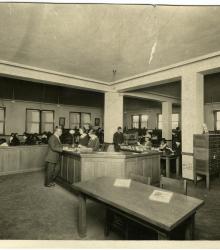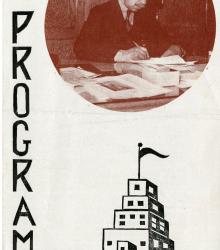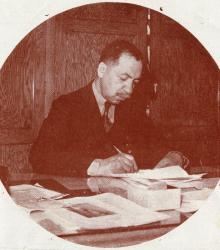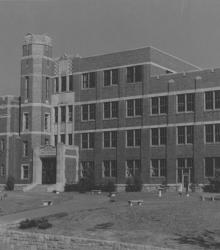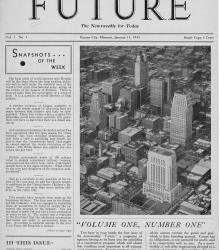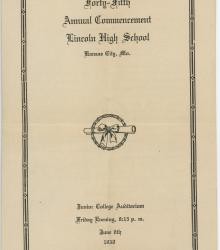Photograph with an exterior, street level view of Lincoln High School. This vantage point faces northeast on Woodland Avenue between 21st Street and 22nd Street.
Lincoln High School
Invitation from the faculty of Lincoln High School to an event honoring the work of Hugh O. Cook on May 5, 1940. There the Missouri State Association of Negro Teachers will present Cook with "The Distinguished Service Medal".
Photograph of the Kansas City Public Library's Lincoln Branch, located within Lincoln High School at the northeast corner of 22nd Street and Woodland Avenue.
Program for the fifty-third annual convention for the Missouri State Association of Negro Teachers. The convention took place from November 16 - 19, 1938 with most events held at Lincoln High School at the northeast corner of 22nd Street and Woodland Avenue.
Handbook for the 1927-1928 school year at Lincoln High School. Contents include information on the faculty, courses, requirements for graduation, library, cafeteria, school rules, clubs, organizations, trophies, traditions, and other topics.
Program for "Building a Life", an event honoring Hugh O. Cook on May 5, 1940 in Lincoln High School Auditorium. It documents Cook's accomplishments and affiliations as well as provides a list of events and committee members.
Over the duration of 40 years at historically black Lincoln High School, Hugh Oliver (H.O.) Cook shaped the school’s culture and curriculum, both as a mathematics and psychology instructor and later as principal of the institution from 1921-1944. A Washington, D.C., native and a graduate of Cornell (with a Bachelor of Arts and Master of Arts in Secondary School Administration), Cook’s vision for Lincoln High to serve and connect to the Kansas City region’s black community continued a legacy set by the school’s earlier principals.
Harlan Leonard once described N. Clark Smith’s impressive persona as the segregated Lincoln High School’s band leader in Kansas City, saying that Major Smith held a “commanding personality”: “He was short, chubby, gruff, military in bearing, wore glasses, and was never seen without his full uniform and decorations. His language was rather rough and occasionally shocking to the few young ladies who were taking music classes, though never offensive. Major Smith simply ran a tight ship. . . . He drilled the Lincoln marching bands until they were the best in the area, some said the best of their kind in the Middle West.”
“The black schools [in Kansas City] were much better than they had any right to be, partly because they were full of talented teachers who would have been teaching in college had they been white, and partly because Negro parents and children simply refused to be licked by segregation.” Then-reporter Roy Wilkins’s statement about education in the Kansas City area aptly summarizes the unjust obstacles that segregation created for black students, their parents, and educators at the segregated schools of Kansas City.
Photograph of the Lincoln High School Cadet Band and Orchestra posed in front of the school. Major N. Clark Smith, director, is pictured in the back to the right.
First issue of the anti-corruption, Kansas City-based newspaper, Future: The Newsweekly for Today. The front page includes a statement on the newspaper's objective, maintaining that the newspaper is not against any certain political party or vice, but that it is simply for "good government".
Program for the annual commencement of Lincoln High School, Kansas City, Missouri, held at the Junior College Auditorium on Friday, June 6, 1930.
